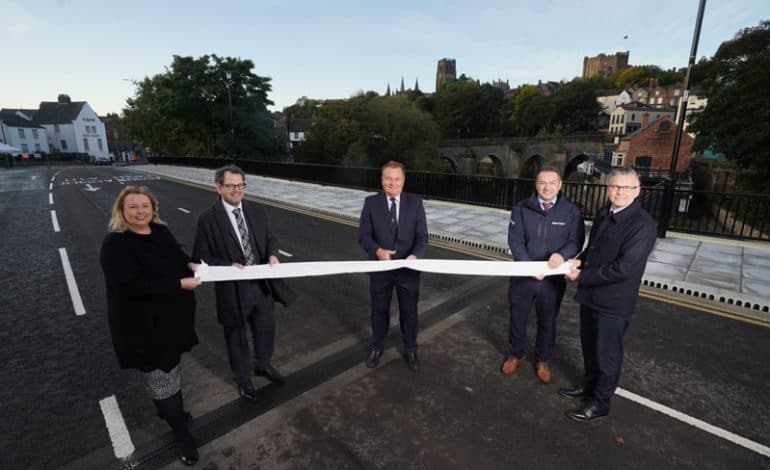More than £30m was invested in road improvement schemes across County Durham during the last financial year.
As part of its commitment to keeping County Durham moving, Durham County Council has continued to increase its contribution to planned road maintenance and improvement projects, investing £10.43m in 2020-21.
Next week, the council’s cabinet will hear this is almost 15 times more than a decade ago and includes contributions towards highway maintenance, drainage, streetlighting and unadopted streets.
Funding is also provided by the Department for Transport (DfT), which contributed £12.2m in 2019-20.
However, in the last financial year, this was increased to £24m after the council secured the Challenge Award to carry out critical repairs to New Elvet Bridge in Durham City. Additional funding was also allocated to tackle potholes across the county.
Featuring 3,793 kilometres of carriageway, 487 road bridges and 82,423 street lighting columns, the road network is the council’s largest and highest value asset and is used daily by residents, businesses and visitors.
It is therefore of critical importance to the county’s economy and the quality of life of its residents.
But it is constantly evolving, with new developments extending its reach and ageing infrastructure creating new challenges and demands for maintenance.
With limited resources, it is important that all investment is well directed to ensure a safe, serviceable and sustainable highway network.
The council sets out how it will achieve this in its Transport Asset Management Plan, and on Wednesday, January 19, cabinet will be asked to approve the annual update report.
Councillors will also be asked to note the substantial investment that has been made in programmed road maintenance schemes and the ongoing work to maximise funding in the future.
This is demonstrated by the significant reduction in the council’s maintenance backlog, which is in line with other councils and reflects the size of the road network in County Durham.
Councillors will hear that this is thanks to the effective prioritisation of projects to get the most out of the budget by delivering the right treatment at the right time, as well as seizing opportunities to use innovative new materials such as plastic and rubber crumb road surfacing.
In 2016, Durham County Council was just one of two local authorities in England to achieve the maximum Band 3 efficiency rating from the DfT’s Incentive Fund and has maintained this rating ever since.
This has helped the council to attract significant investment from the DfT for road improvement schemes and, together with its Transport Asset Management Plan, places it in a strong position to secure further funding in the future.
Cllr John Shuttleworth, the council’s cabinet member for rural communities and highways, said: “The county’s adopted highways network plays a vital role in all of our lives.
“Not only does it allow residents to commute to work and visit friends and loved ones, but it is critical to the prosperity of towns and villages across the county, helping businesses to transport goods and connect with their customers.
“As we work to strengthen our economy amidst the ongoing challenges of the coronavirus pandemic, we remain committed to maintaining County Durham’s adopted highways network.
“It is encouraging to see that, despite limited resources, we have once again increased our financial contribution, have reduced our maintenance backlog and have retained our position as one of the country’s most efficient highway authorities.”








